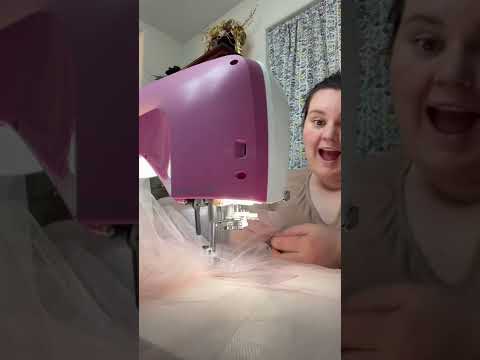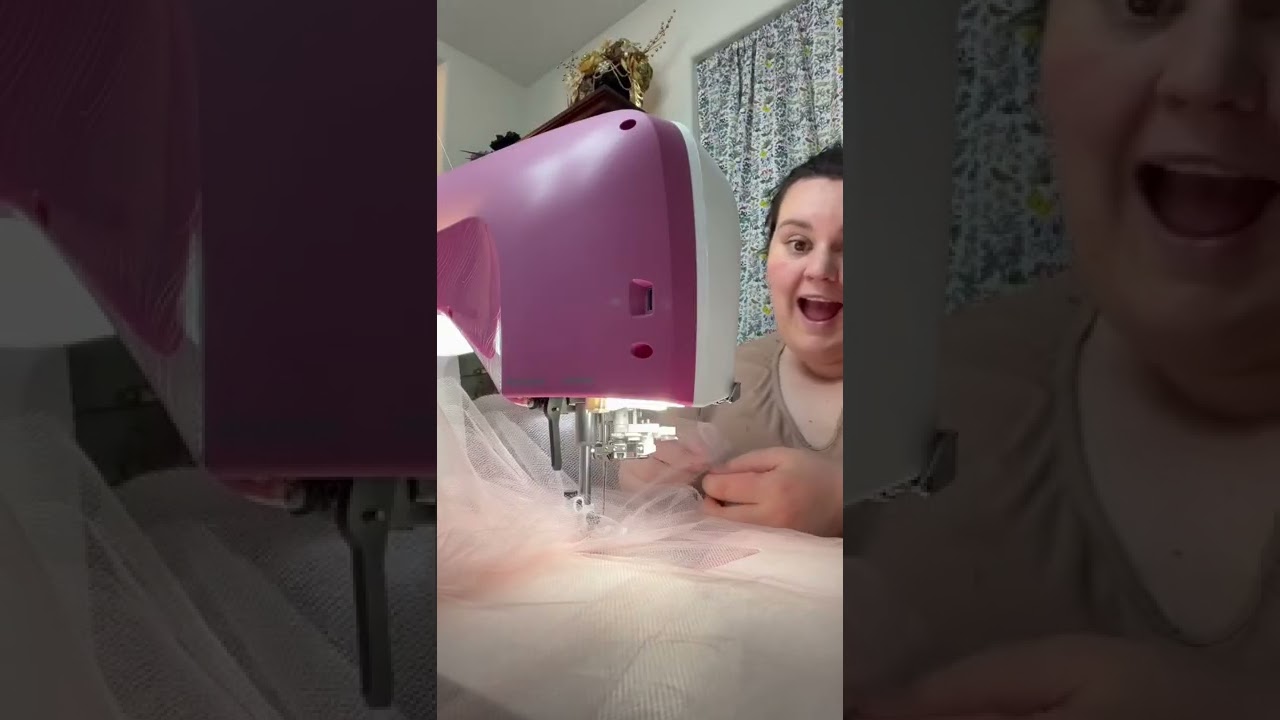Discover the Enchanting World of Tutu Fabrics: Delve into a mesmerizing realm of elegance and grace with our exquisite collection of tutu fabrics. Crafted with meticulous attention to detail, our fabrics are designed to bring out the inner ballerina in you. Feel the softness and delicate touch of our premium materials, carefully selected to ensure utmost comfort and freedom of movement. Each thread is intricately woven to create a lightweight, yet durable fabric that gracefully drapes around your body, allowing you to effortlessly glide across the stage. With a wide range of vibrant colors and captivating patterns, our tutu fabrics ignite creativity and inspire unique designs that will leave a lasting impression. Whether you are a professional dancer, a costume enthusiast, or a parent preparing for a magical recital, our fabrics are the perfect choice to add a touch of elegance to any performance. Elevate your tutu game and embrace your inner ballet star with our luxurious tutu fabrics that will make you feel like you are dancing on cloud nine. Unleash your imagination and create stunning tutus that will steal the show, leaving everyone in awe of your mesmerizing presence. Experience the enchantment of tutu fabrics and let your inner beauty shine through every twirl and pirouette.

The Importance of Fabric for Tutus
Tutus are iconic garments that have been associated with ballet and other forms of dance for centuries. These voluminous skirts, made up of numerous layers of fabric, create a whimsical and ethereal aesthetic that captures the attention of audiences. One of the key factors in creating a stunning tutu is the choice of fabric. The right fabric can make all the difference in terms of the skirt’s structure, movement, and overall appearance. In this article, we will explore the various fabrics commonly used for tutus and their unique qualities.
Tulle: The Classic Choice
Tulle is the most common fabric used for tutus and is often considered the classic choice. This lightweight and sheer material creates a soft and delicate look, perfect for conveying grace and elegance. Tulle is typically made from nylon or silk and is available in a wide variety of colors. Its versatility allows for different layering techniques, resulting in different levels of fullness and volume. Additionally, tulle can be easily manipulated to create different textures and effects, such as ruffles or pleats. Its affordability and availability make it a popular choice among dancers and costume designers alike.
Satin: For a Touch of Luxury
Satin is a fabric known for its lustrous and smooth finish. While not as commonly used as tulle for tutus, it adds a touch of luxury and sophistication to any costume. Satin is typically made from silk or polyester and has a heavier weight compared to tulle. This weight allows for a more structured and tailored appearance, making it a suitable choice for classical ballet tutus. Satin also provides a beautiful sheen under stage lights, enhancing the dancer’s presence on stage. However, it is important to note that satin can be less forgiving in terms of movement and can restrict the dancer’s range of motion. Careful consideration should be given when choosing satin for a tutu, taking into account both aesthetics and functionality.
Organza: The Ethereal Option
Organza is a sheer and lightweight fabric that adds a touch of ethereal beauty to any tutu. It is typically made from silk or synthetic fibers and has a crisp and translucent quality. Organza is often used for the top layer of a tutu to create a floating and dreamlike effect. Its stiffness allows for the fabric to hold its shape, giving the skirt a distinct silhouette. Organza is also popular for embellishments, such as overlays or flower accents. However, it is important to note that organza can be more delicate and prone to tearing compared to other fabrics. Careful handling and maintenance are required to ensure the longevity of an organza tutu.
Stretch Fabrics: Balancing Comfort and Aesthetics
While traditional tutus are made with non-stretch fabrics, such as tulle or satin, the use of stretch fabrics is becoming increasingly popular. Stretch fabrics, such as lycra or spandex, offer a balance between comfort and aesthetics. These fabrics allow for greater flexibility and ease of movement, providing dancers with the freedom to execute intricate choreography. Additionally, stretch fabrics can provide a more form-fitting silhouette, accentuating the dancer’s lines and movements. However, it is important to note that the use of stretch fabrics may alter the overall appearance of a tutu. The layers may not be as voluminous, and the skirt may not have the same ethereal quality as those made with non-stretch fabrics.
Specialty Fabrics: Pushing Boundaries
With the evolution of dance and costume design, specialty fabrics are being explored to create unique and avant-garde tutus. These fabrics include metallics, sequins, and even unconventional materials like plastic or feathers. These specialty fabrics can add drama, texture, and visual interest to a tutu, pushing the boundaries of traditional design. While not suitable for every performance or dance style, these fabrics can be a powerful tool for choreographers and costume designers looking to make a statement. It is important to consider the specific requirements of the performance and the dancer’s comfort when working with specialty fabrics.
In conclusion, the choice of fabric for a tutu plays a crucial role in determining its overall look and functionality. From the classic elegance of tulle to the ethereal beauty of organza, each fabric brings its own unique qualities to the design. Consideration should be given to factors such as weight, movement, and desired aesthetic when selecting fabric for a tutu. Whether it’s a traditional ballet performance or a contemporary dance piece, the right fabric can elevate the impact and presence of a tutu on stage.
Creating a Show-Stopping Tulle Jacket with 300 Yards of Fabric
Fabric for Tutus
Fabric for Tutus
Tutus are delicate and whimsical garments that require the perfect fabric to achieve their ethereal appeal. The choice of fabric plays a crucial role in the overall look and feel of a tutu, ensuring its fluidity, volume, and comfort. Here is a comprehensive table highlighting some of the most popular fabrics used in the creation of stunning tutus:
| Fabric | Description | Advantages | Disadvantages |
|---|---|---|---|
| Tulle | Tulle is a lightweight, fine netting fabric that is commonly used in tutu construction. It is available in various colors and finishes, such as matte or shimmer. | – Excellent for creating a classic, romantic look – Provides excellent volume and structure – Easy to manipulate and gather for different styles |
– Can be scratchy or uncomfortable if not lined – Requires careful handling to avoid snagging or tearing |
| Organza | Organza is a sheer, crisp fabric that adds an elegant touch to tutus. It has a slightly stiffer drape compared to tulle. | – Offers a more structured appearance – Creates a graceful, floating effect – Holds its shape well |
– May lack the softness and fluidity of other fabrics – Can be prone to wrinkling |
| Silk Chiffon | Silk chiffon is a lightweight, sheer fabric that exudes sophistication. It has a delicate drape and provides a luxurious touch. | – Offers a luxurious and ethereal look – Drapes beautifully and flows gracefully – Soft and comfortable against the skin |
– Requires careful handling and may be more challenging to work with – Can be more expensive compared to other options |
| Stretch Net | Stretch net is a versatile fabric that combines the stretchiness of a knit fabric with the structure of netting. It is commonly used in professional ballet tutus. | – Provides excellent stretch and flexibility – Offers superior durability and resistance to tearing – Allows for greater freedom of movement |
– May be less readily available compared to other fabrics – Limited color options |
Each fabric brings its own unique qualities and charm to a tutu, allowing designers and dancers to create visually stunning and captivating performances. Whether it’s the romantic allure of tulle, the elegant crispness of organza, the luxurious feel of silk chiffon, or the flexibility of stretch net, the choice of fabric is a key element in crafting a breathtaking tutu that will leave a lasting impression.

